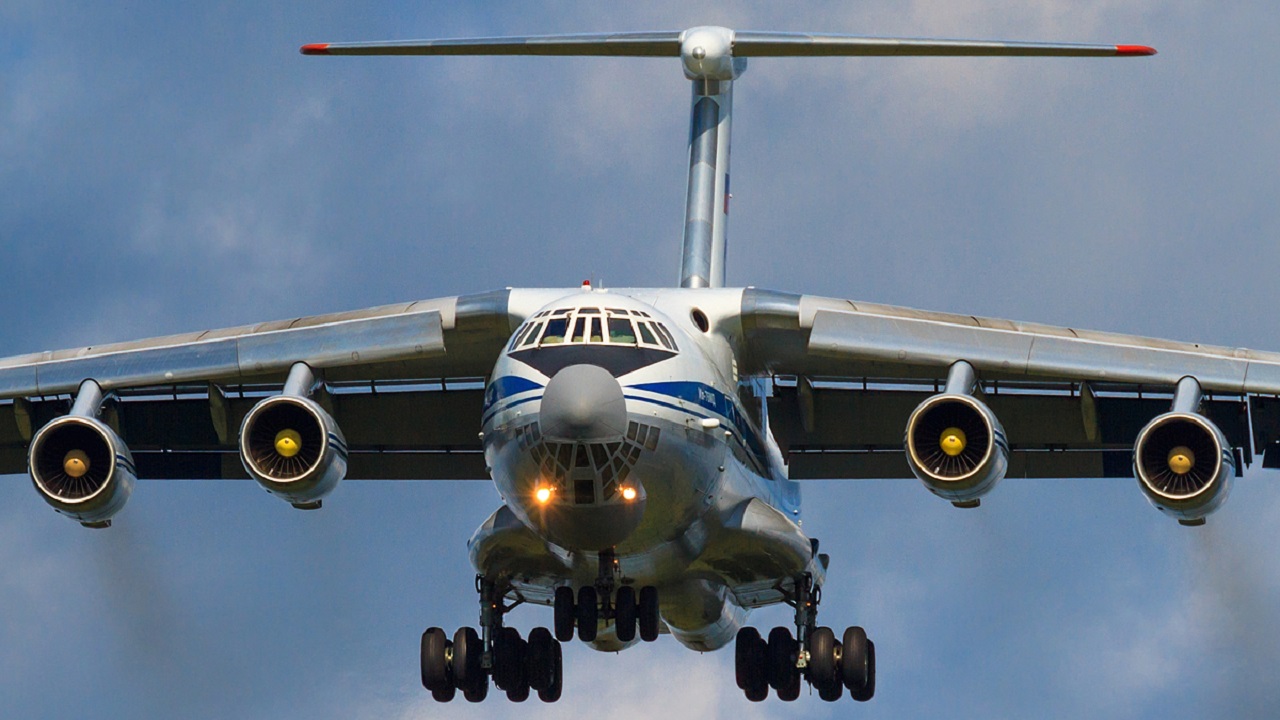Designed in the middle of the Cold War to serve as the backbone of the Soviet Air Force’s airlift capability, the Il-76 has remained a staple in the Russian Aerospace Forces, transporting a variety of military cargoes in support of practically every Russian military engagement in recent history. With a very recognizable silhouette, the Il-76 is expected to remain in service for many years to come as a result of modernization programs of the aircraft undertaken by Russia.
What is the Il-76 Capable of?
The basic layout of the Il-76, sometimes known by its NATO reporting name “Candid,” is defined by its high wings, t-shaped tail, and four turbojet engines (either 1960s-era D-30KP or PS-90A-76s originally developed in the 1980s) located under the wings. Crewed by six or seven airmen, the Il-76 is capable of carrying 128 paratroopers or the equivalent of up to 47 metric tons of cargo in its basic configuration, according to Russian sources. At altitude, the original version of the Il-76 is reportedly capable of flying at roughly 480 miles per hour and is designed to perform airdrop and airlift missions alike with a variety of cargoes, including infantry fighting vehicles and armored personnel carriers.
How was the Il-76 Developed?
Work began in the mid-1960s to develop an analog to the U.S. C-141 Starlifter, whose speed was far superior to any transport aircraft then in Soviet service. The development of the aircraft was primarily handled by the Ilyushin design bureau, which is today an element of the state-run United Aircraft Corporation conglomerate.
With its first flight in 1971, the aircraft was officially accepted into service in 1974. The Il-76 was in large part designed to operate out of small, poorly developed runways and in all weather conditions. While it was initially produced in Tashkent, Uzbekistan before the collapse of the Soviet Union, the manufacture and modernization of the Il-76 have since additionally been taken up by the Aviastar facility in Ulyanovsk.
Variants of the Il-76
Since its original development in the Cold War, numerous versions of the Il-76 have been designed and produced. Some, such as the Il-78 aerial refueling tanker or Beriev A-50 and A-100, airborne early warning and control aircraft (among many other variants), represent a significant departure from the original purpose or configuration of the Candid. Other, more modern, versions seek to update the transport aircraft for service far into the future.
The Il-76MD-90AE is the most updated version of the transport aircraft in Russian service today. Reportedly featuring a variety of upgrades to its carrying capacity, flight range, and onboard loading equipment, the Il-76MD-90AE is intended to help form the backbone of Russia’s airlift capabilities in the future. Other modernized variants such as the Il-76M, Il-76MD, and Il-76TD included similar improvements to the aircraft’s carrying capacity and capabilities compared to the original version.
The service history of the Il-76 was dramatically punctuated in the opening days of Russia’s invasion of Ukraine, in which the Ukrainian armed forces claimed to have shot down Russian Il-76s. While U.S. officials later stated that U.S. intelligence had helped Ukrainian forces shoot down some unspecified Russian transport aircraft, the details around the reported shootdown remain foggy. Russian Il-76s were possibly intended to play a significant role in the first hours of Russia’s invasion, potentially landing large amounts of troops at Hostomel Airport near Kyiv, had the operation to seize the airfield gone according to plan. More recently, Russian news sources reported that an Il-76 crashed in Ryazan with some fatalities, allegedly due to an engine failure.
Notwithstanding its hazy service history as part of Russia’s 2022 invasion of Ukraine, the Il-76 will likely remain in service for years to come. Russia has no equivalent or superior transport aircraft waiting in the wings to take over, so modernized versions of the aircraft still have many years of service ahead of them.
Wesley Culp is a Research Fellow at the Center for the Study of the Presidency and Congress. He regularly writes on Russian and Eurasian leadership and national security topics and has been published in The Hill as well as in the Diplomatic Courier. He can be found on Twitter @WesleyJCulp.

